 No, she's not gold. She's something far better. 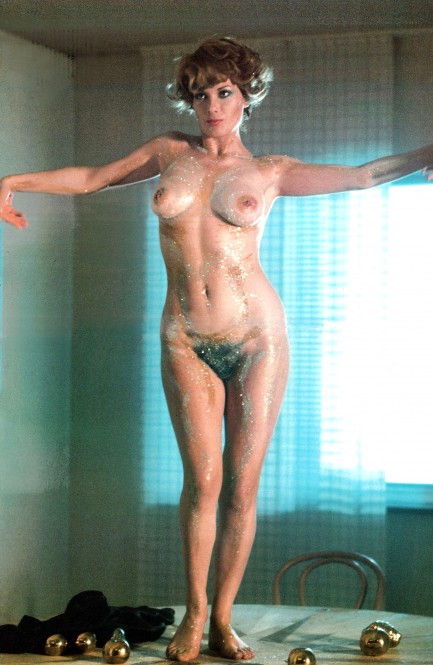
This Christmas themed image of Algerian born Italian star Edwige Fenech was made in 1976 while she was filming the comedy Cattivi pensieri, known in English as Evil Thoughts. She actually does in the film exactly what you see here, posing and dancing on a table while covered in holiday glitter, before being whisked off to bed by co-star Luc Merenda for some hazy focus softcore sex. Don't let that entice you into watching the movie, though. Fenech is a wonder, but she's done far better stuff.
 Ciné-Revue was the go-to publication for movie stars seeking exposure. 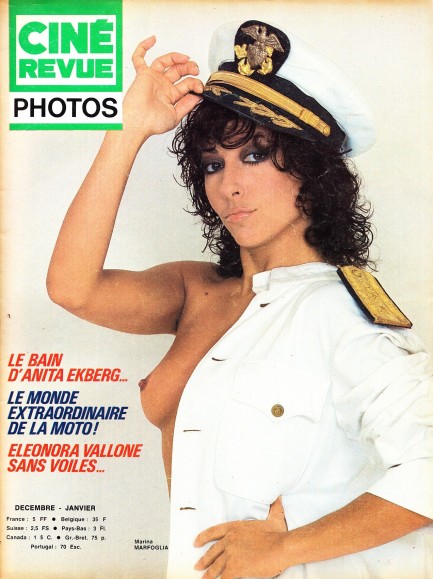
Here's your official Christmas gift, a prime example of that mid-century phenomenon we discuss often, the intersection of mainstream and adult cinema during the sixties and seventies. Ciné-Revue, which was published in Belgium and distributed there and in France, Switzerland, Canada, Portugal, Britain, and the Basque region of Spain, was at the vanguard of that idea. It highlighted both popular stars and their adult counterparts, blurring the line between the two. It wasn't hard to do. Famous performers often acted in sexually oriented films, and Ciné-Revue was a platform that helped cinematic explorations of sexual ideas be taken seriously.
The issue you see above is the cover of Ciné-Revue Photos 49, a visual compendium of actresses both world famous and somewhat obscure. The names run the gamut from Anita Ekberg to Marina Marfoglia. Marfoglia gets the cover, while Ekberg gets the rear, and that's exactly what we're talking about—the obscure elevated over the known. Both are also featured in multiple pages inside—but while Ekberg gets seven, Marfoglia gets eight and the centerfold. The issue is about a hundred pages, but we're unable to put together a post that long. Instead, we've selected some of the nicer images to warm up this winter day. Enjoy, and don't worry about us slaving over a computer. We put this collection together last week. Right now, on Christmas, we're traveling with the PIs.
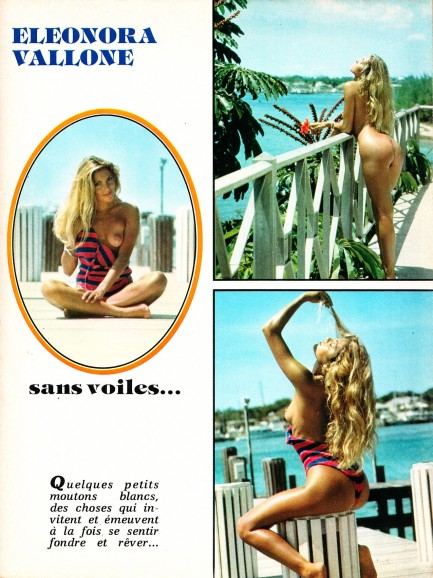 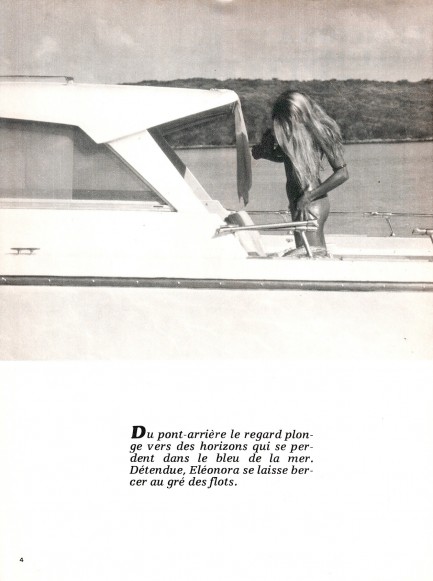 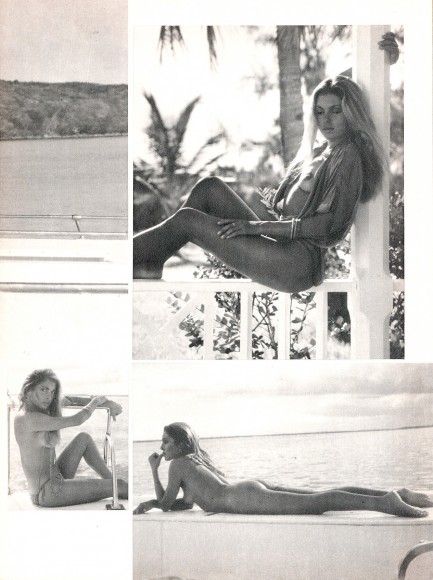 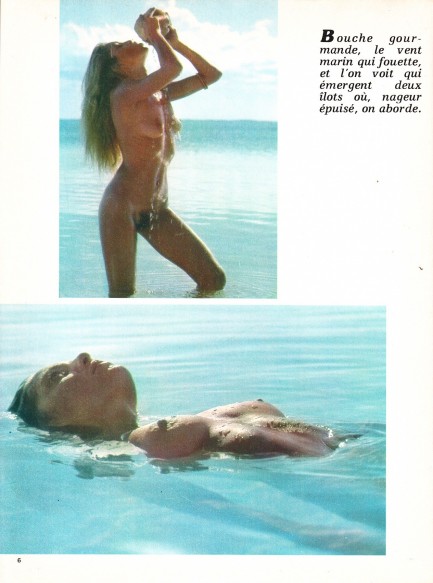 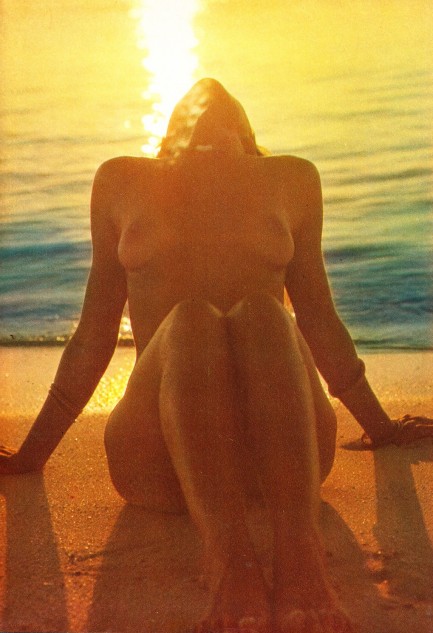 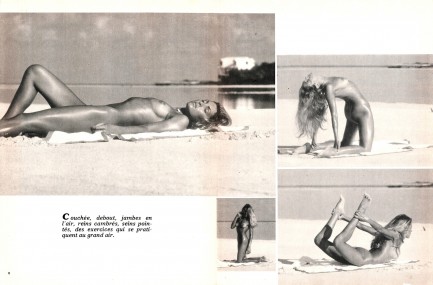  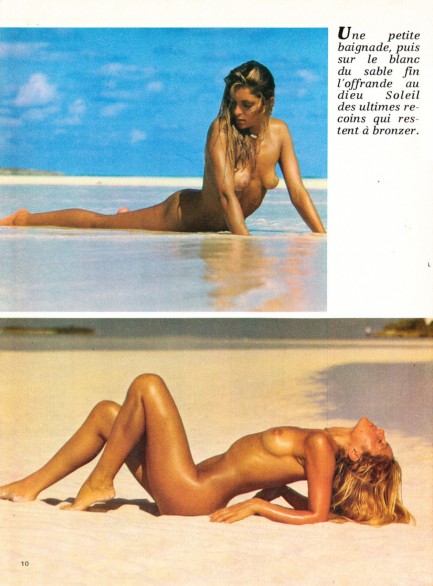 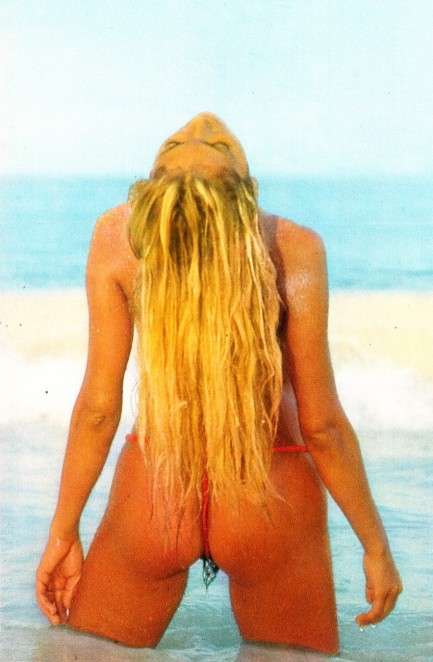  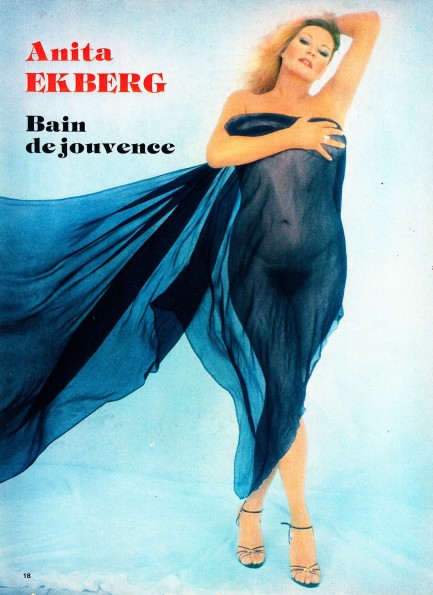 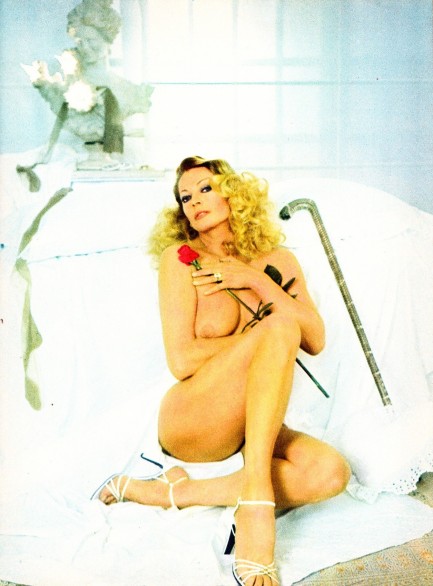 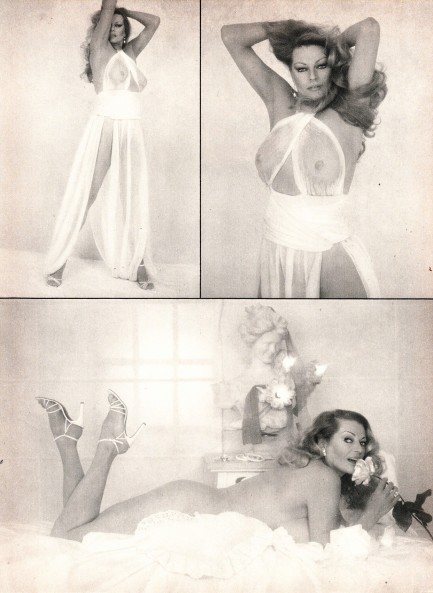 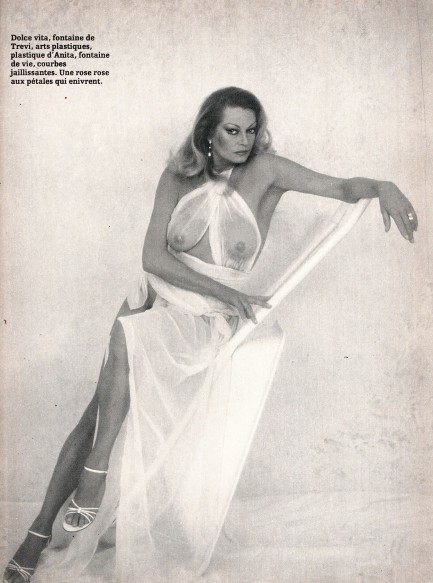 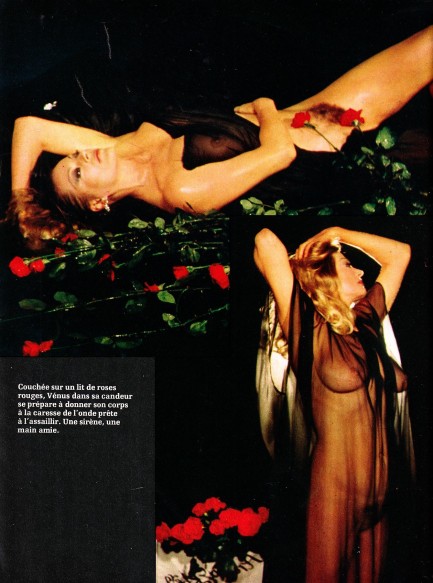 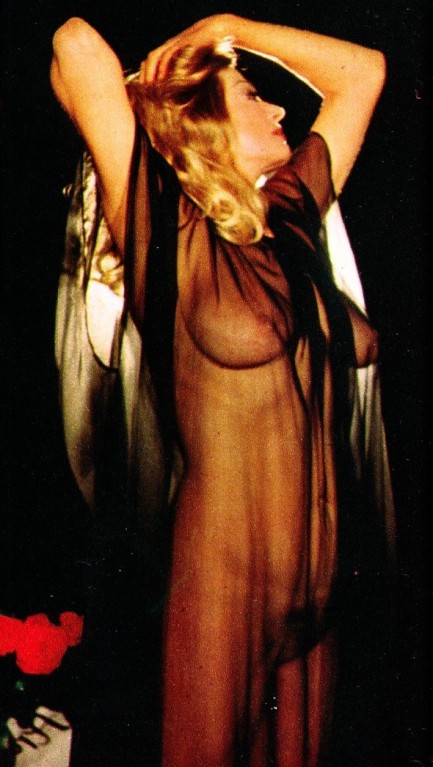 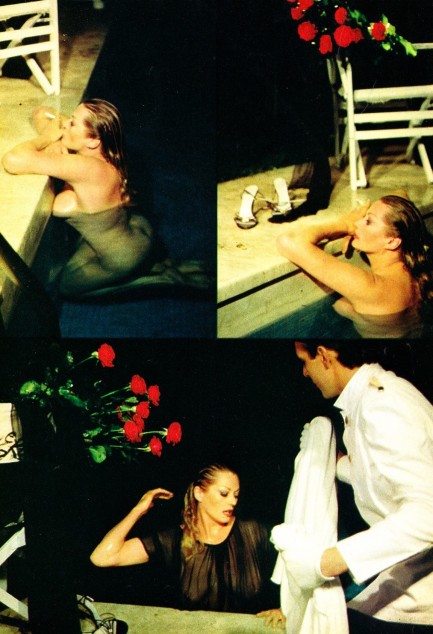 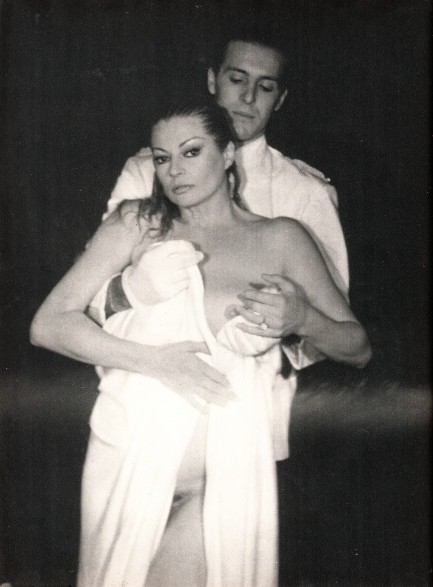 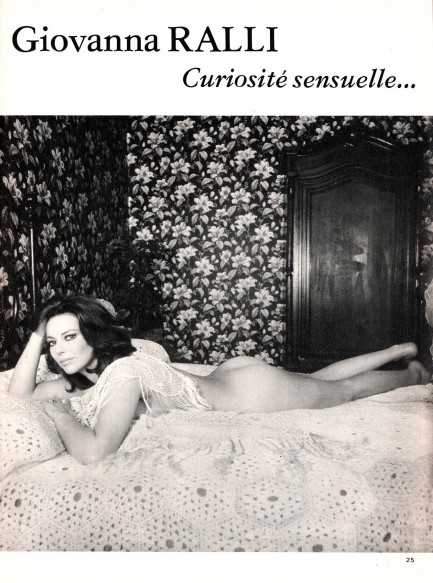 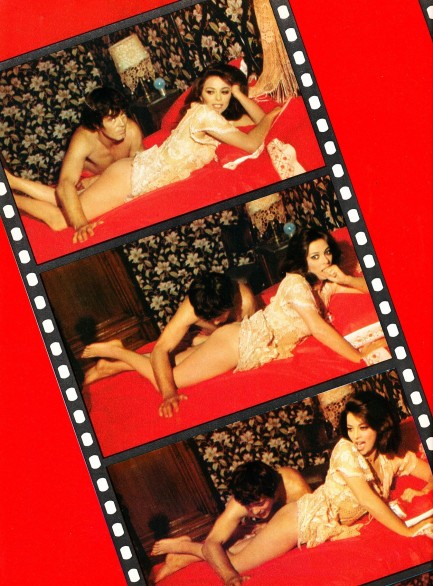 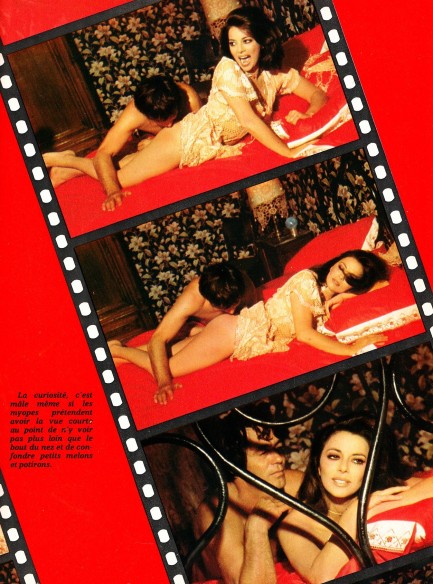 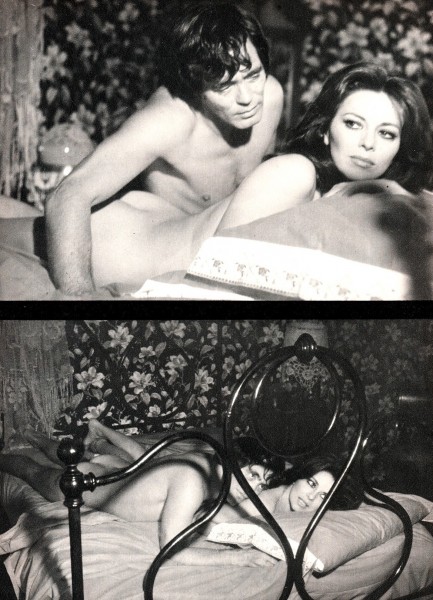 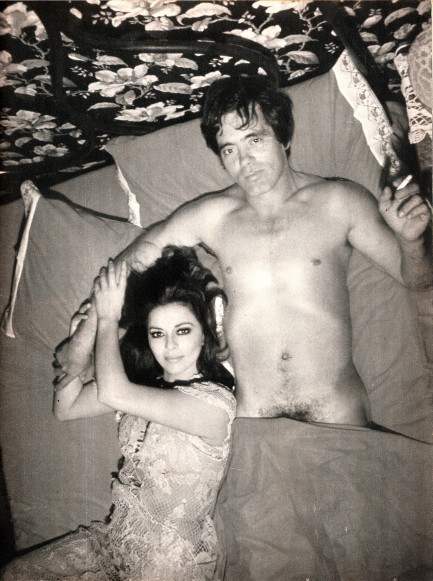 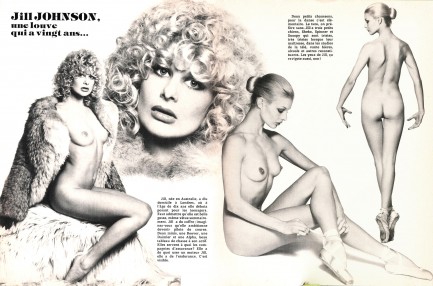 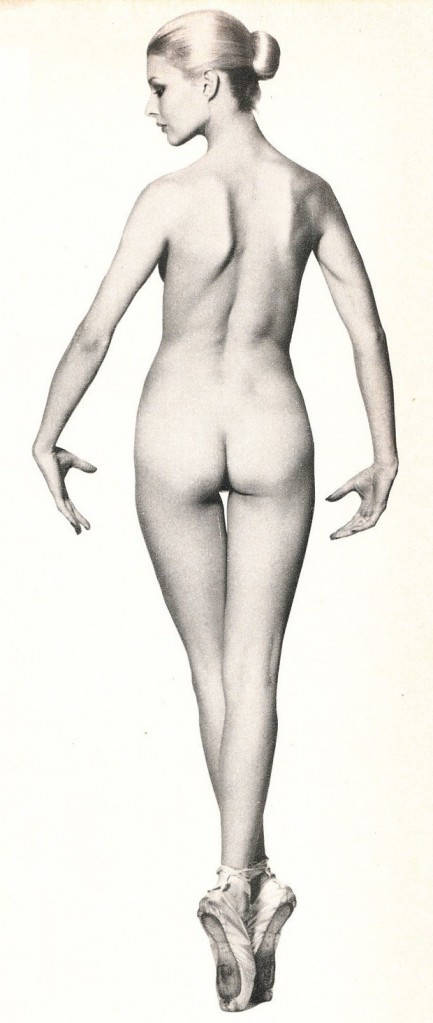 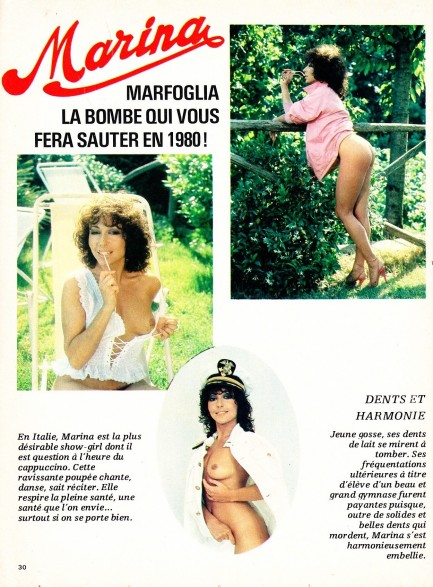  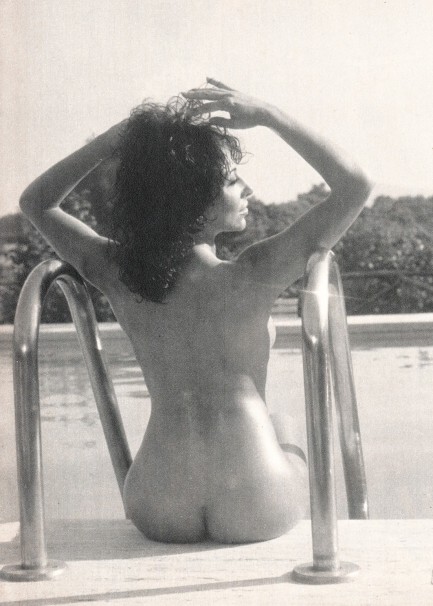 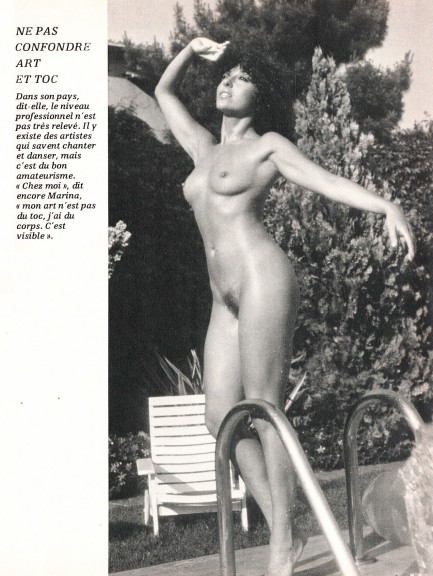  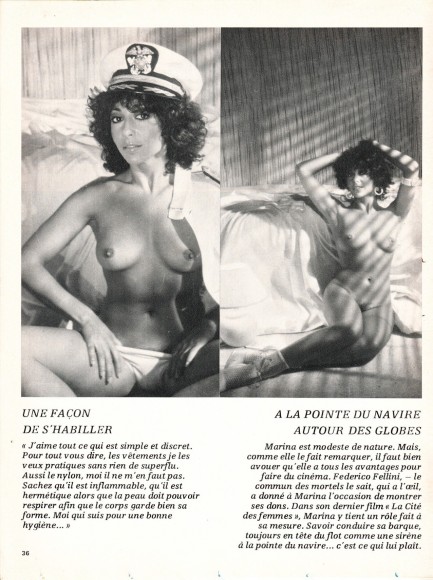  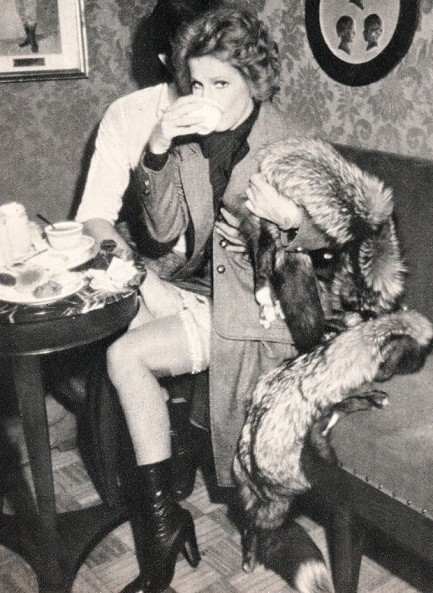 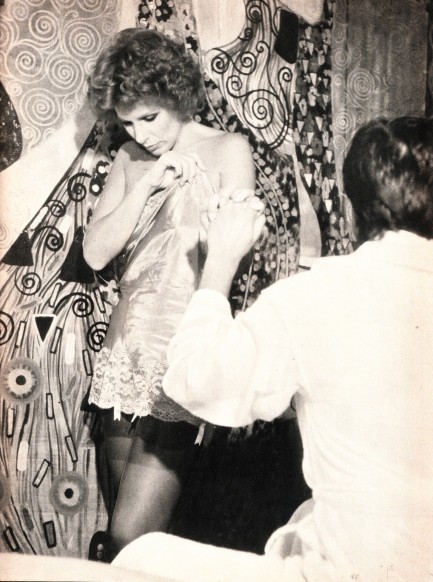 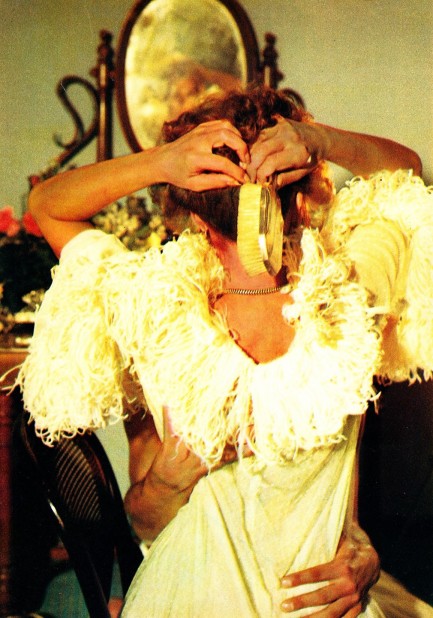 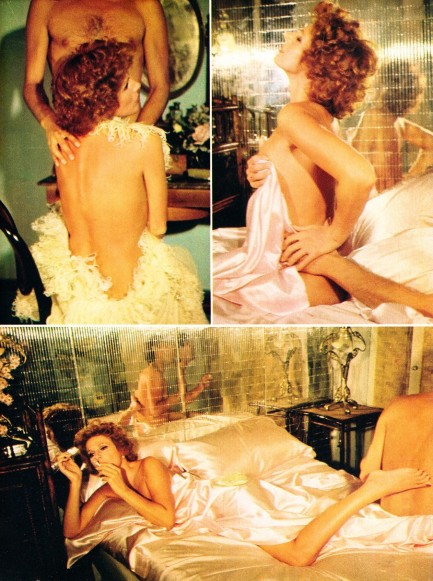 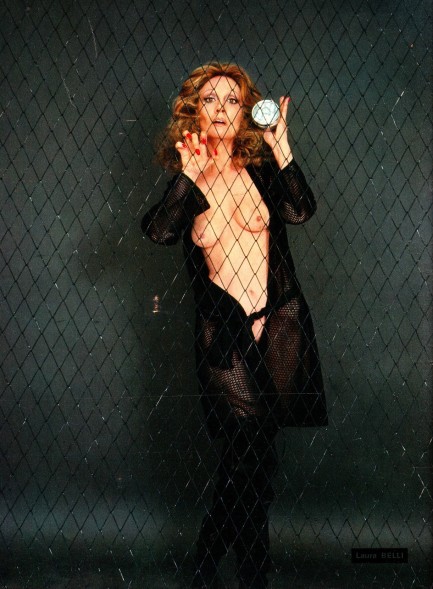    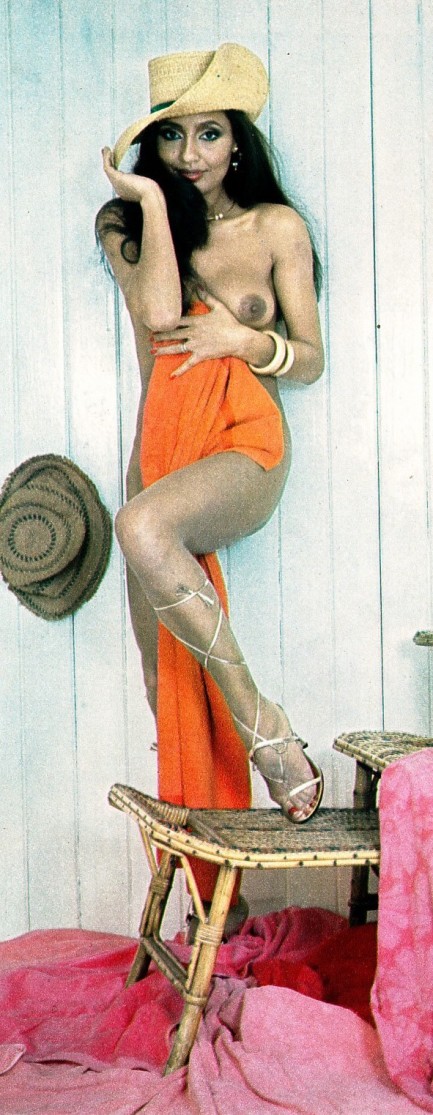 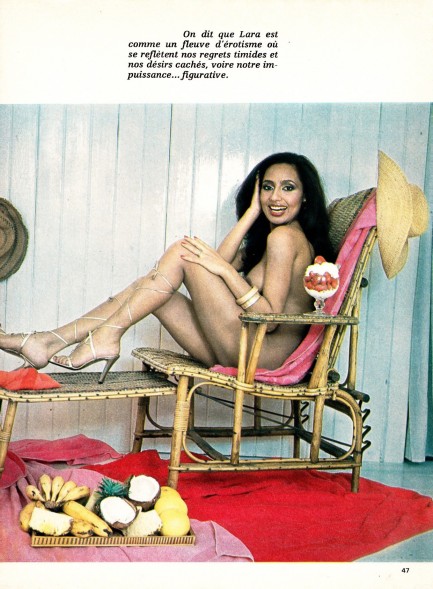 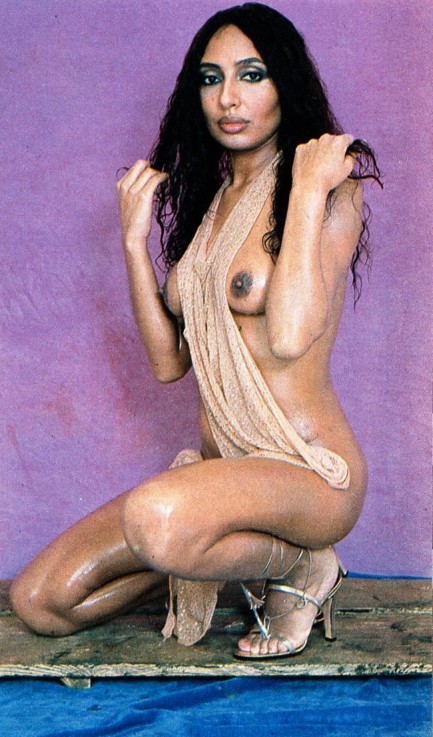   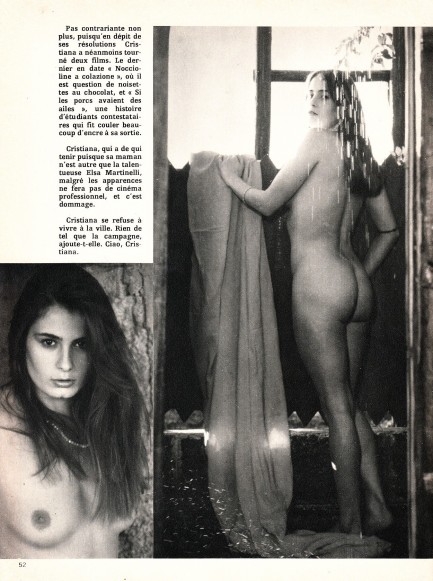 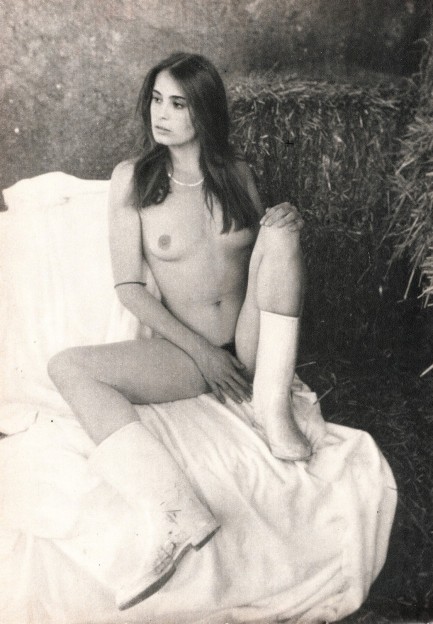 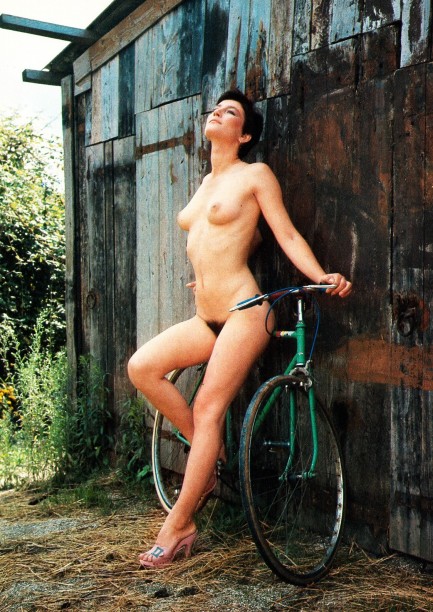 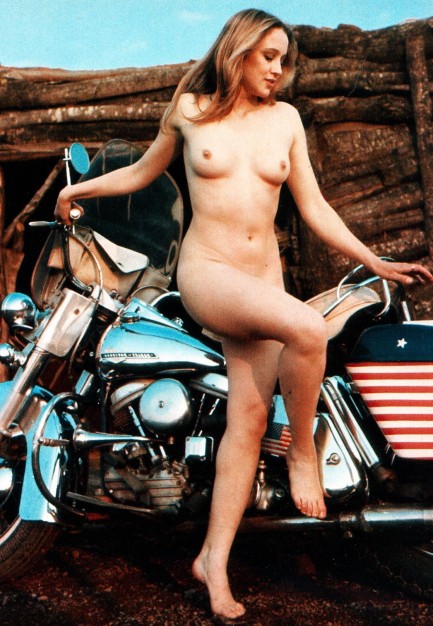 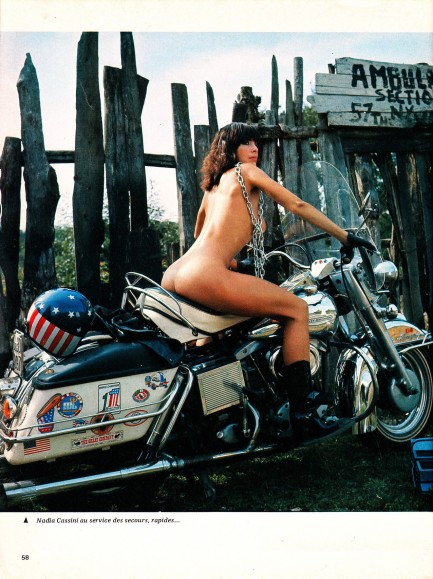  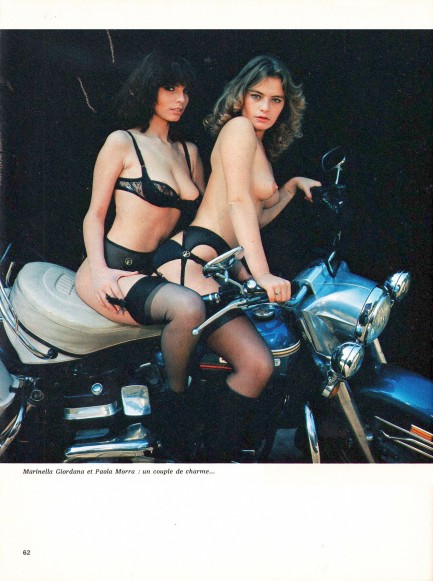  
 You're too late. I already pulled it out of the stone, and now I'm in charge of everything. 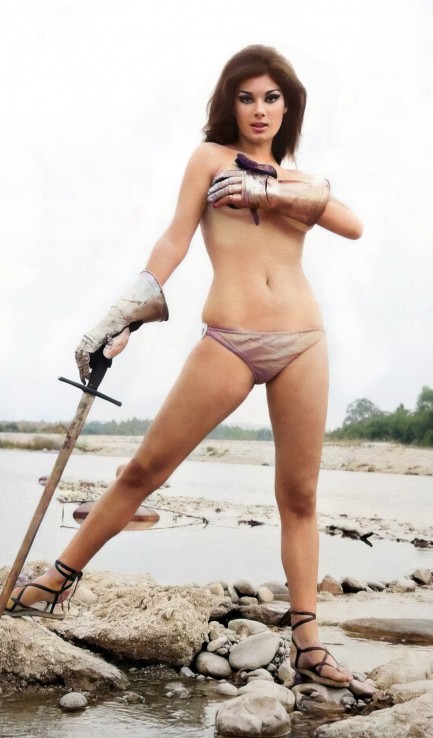
Edwige Fenech was born in Algeria when it was under French control, had Maltese and Italian parents, and became a film star in Italy, so theoretically she gets to rule all those lands, and possibly England too, since we figure she went there to do the sword pulling. Her first decree as wielder of Excalibur? Better titles for her movies. The photo, which is a colorization of a black and white original, was made for 1969's Alle Kätzchen naschen gern, known in English as All Kitties Go for Sweeties, or alternatively The Blonde and the Black Pussycat. All three of those are terrible names for a film. It was later titled in English The Sweet Pussycats, which is a little better. Obviously, it's a comedy, and if you were to guess it's too stupid to be funny you'd be right. However, anything with Fenech is worth a little something.
 Continental Film Review ties modern cinema up in a tidy little package. 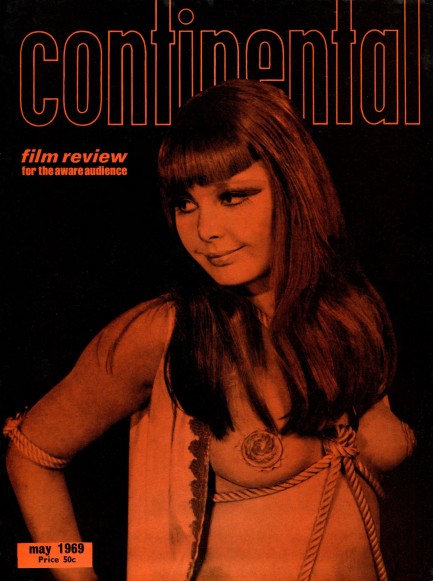
Above and below, the cover and assorted interior pages from Continental Film Review, with all the rare imagery and erudite commentary from the European cinema scene readers had come to expect. The cover features German actress Brigitte Skay bound with rope, and those of note inside include Anna Gaël, Romy Schneider, Alain Delon, Serge Gainsbourg, Jane Birkin, and Edwige Fenech. Skay and Gaël are featured because of their roles in the 1969 sci-fi film Zeta One, aka The Love Factor, which it happens we discussed way back in 2010. Shorter version: Barbarella it ain't. Continental Film Review had a secondary focus on non-performance visual arts. This issue looks at animation from Sweden and talks about some hot illustrators of the time, including Jan Lenica and Per Ahlin, drawing comparisons between them and famed painters like René Magritte. All of that and more in thirty-plus scans. 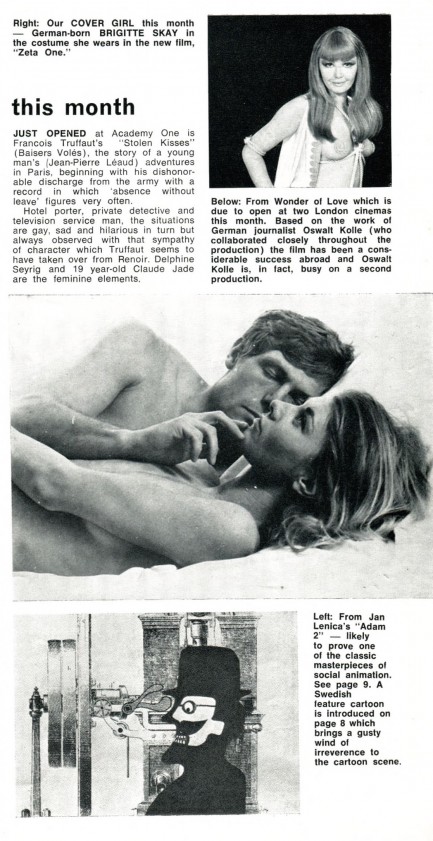 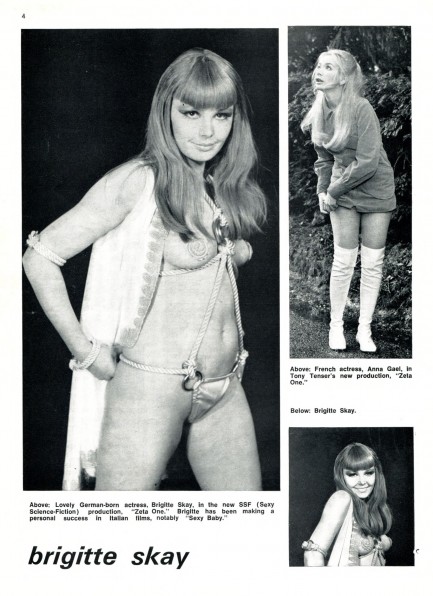  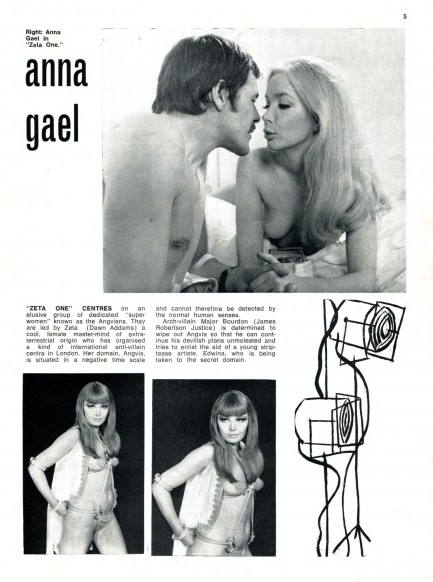 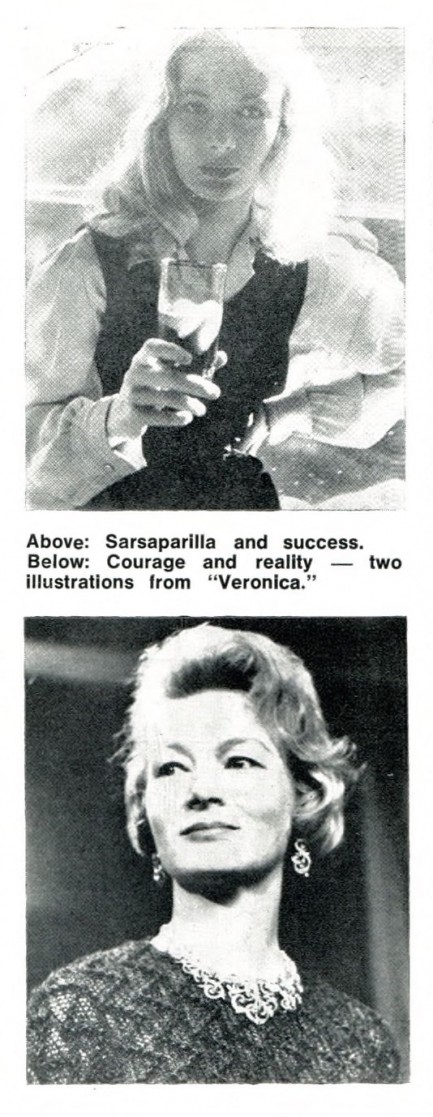 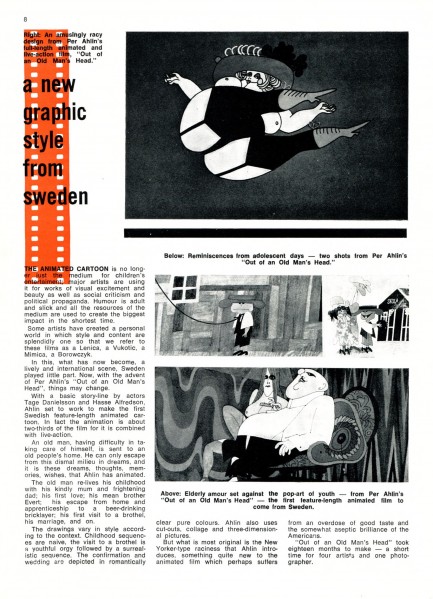 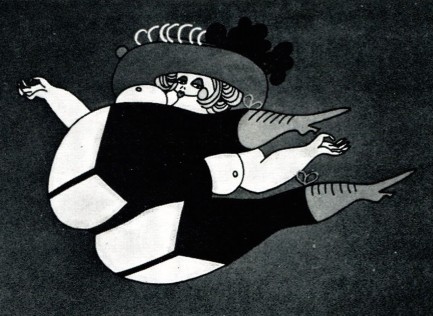 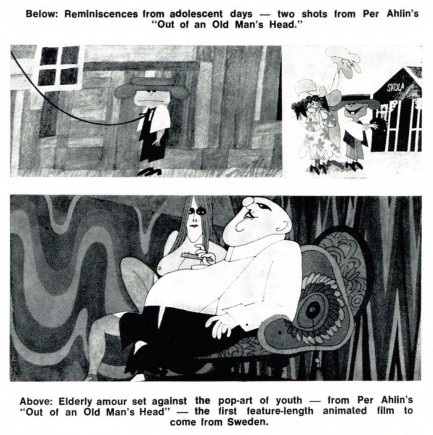 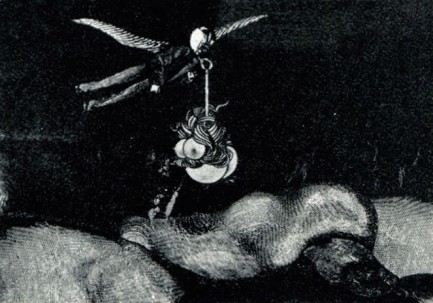 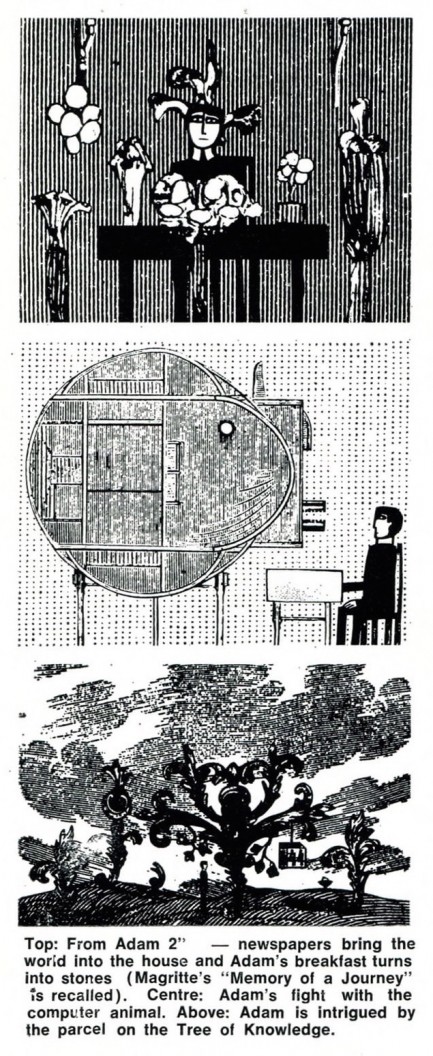 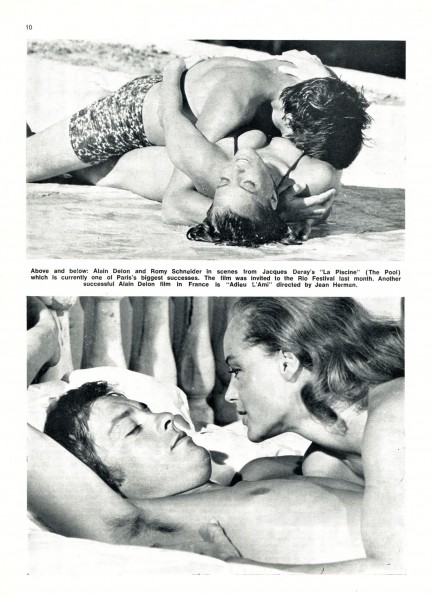  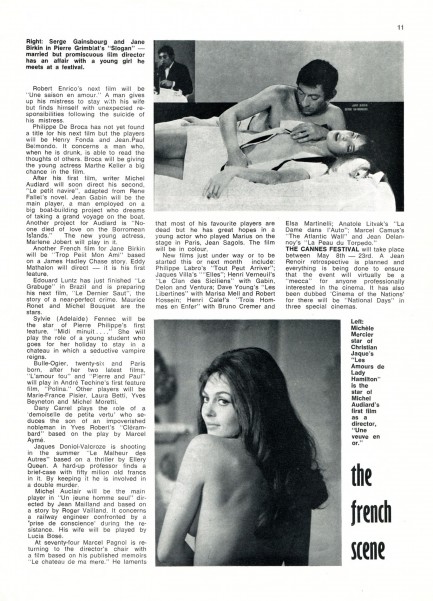 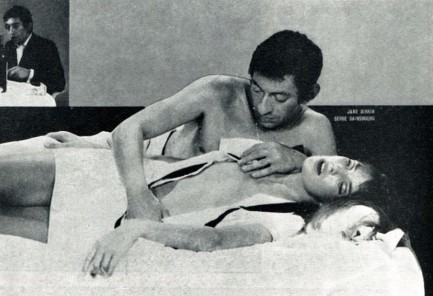 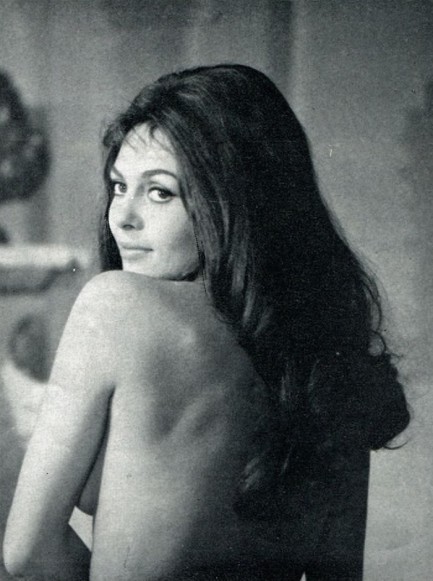 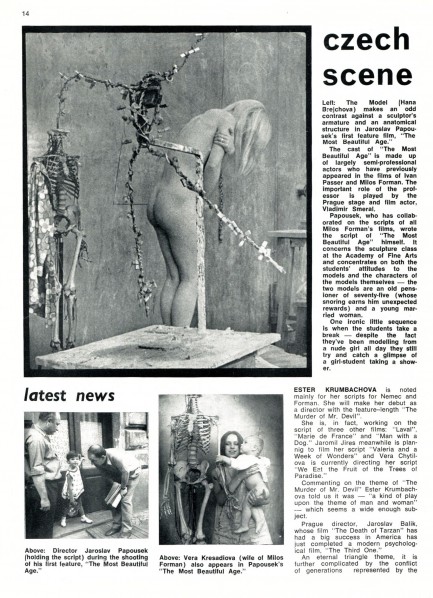 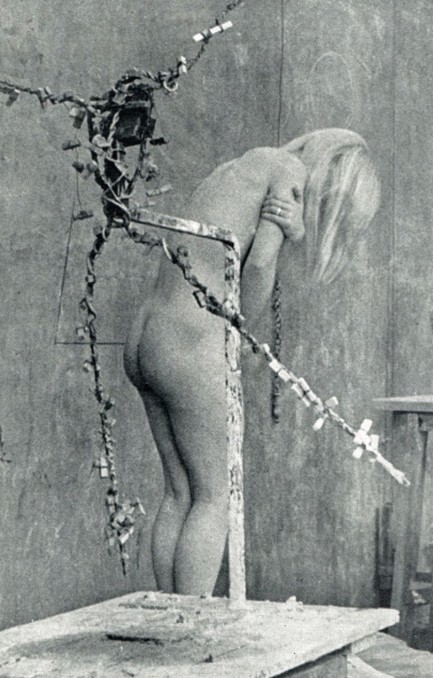 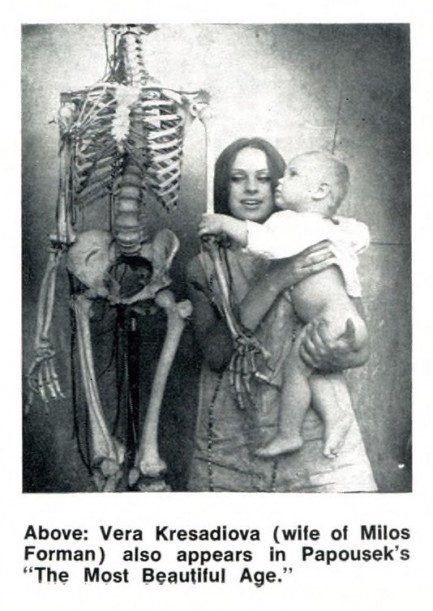 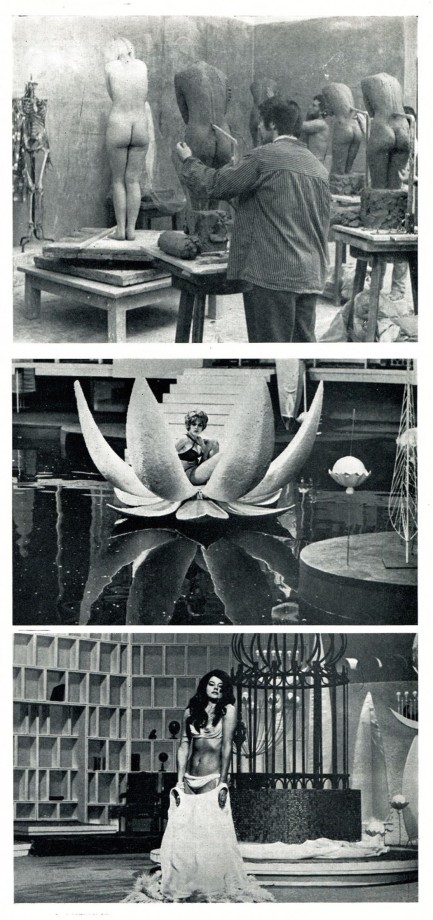 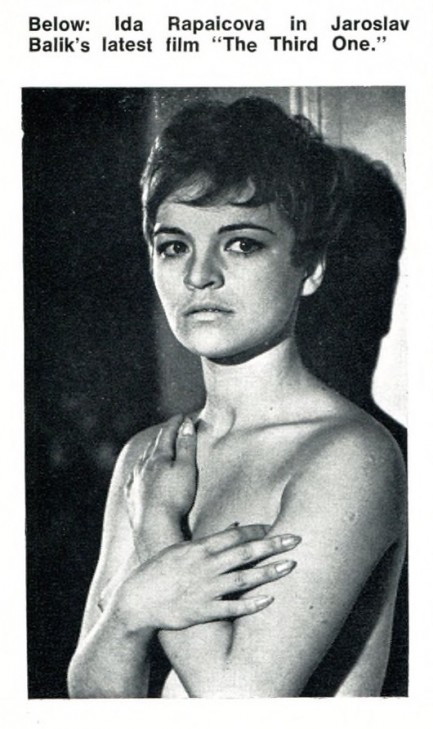 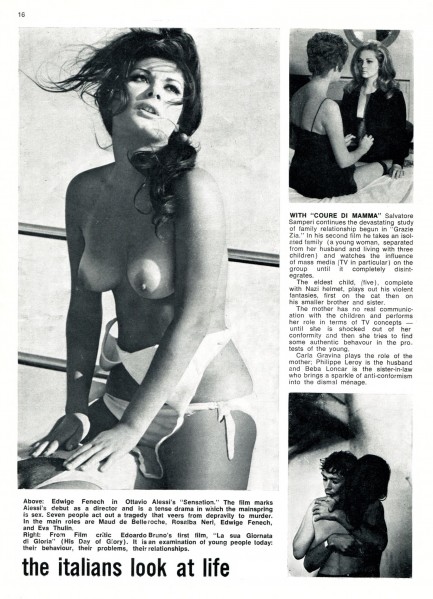 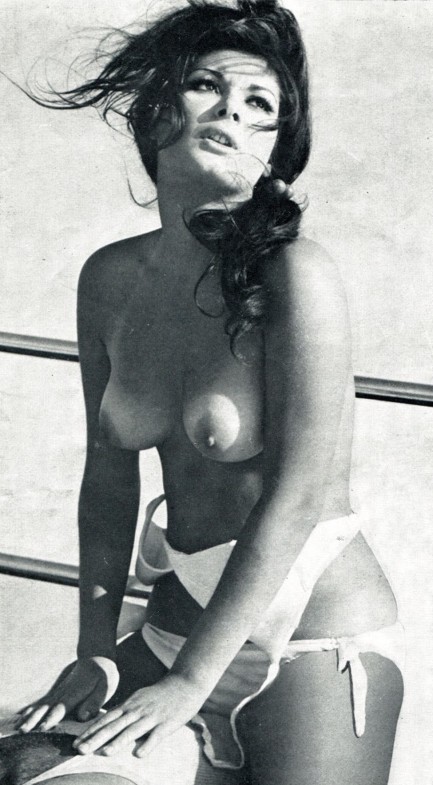 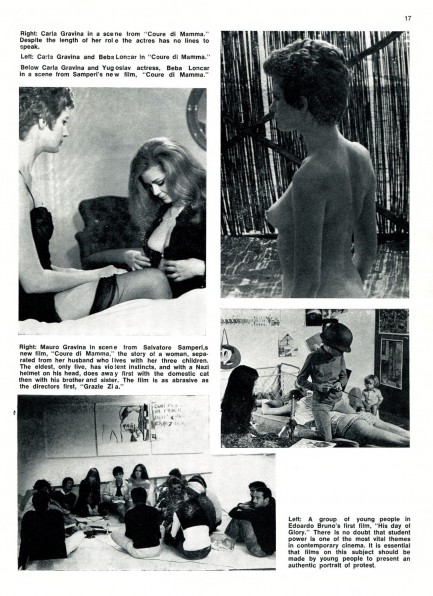 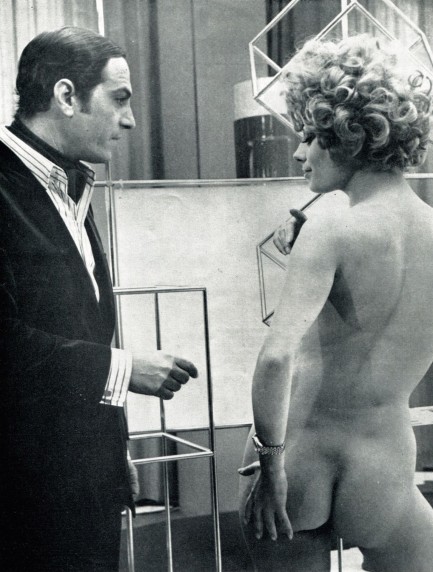 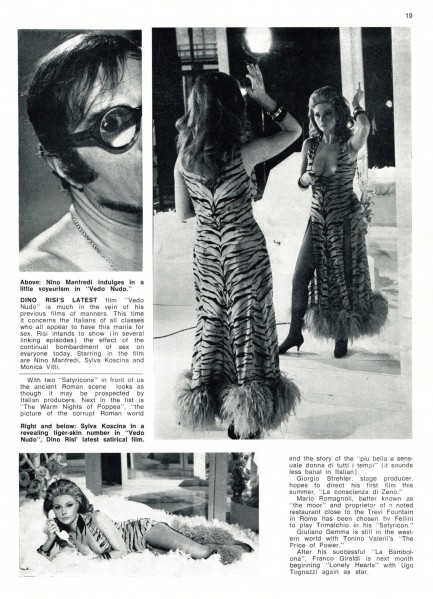 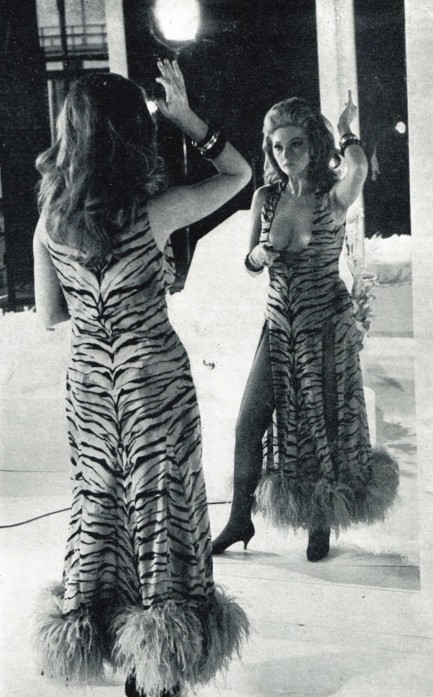 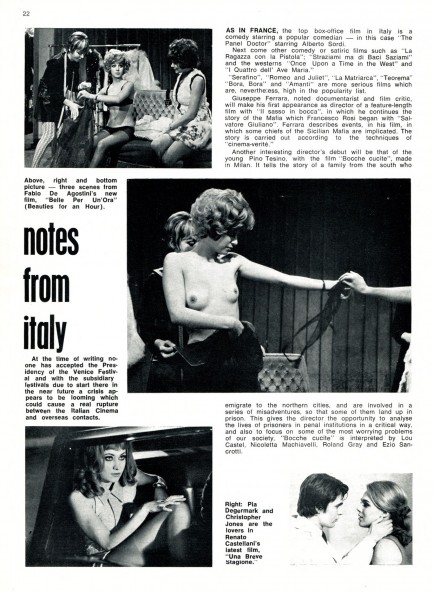 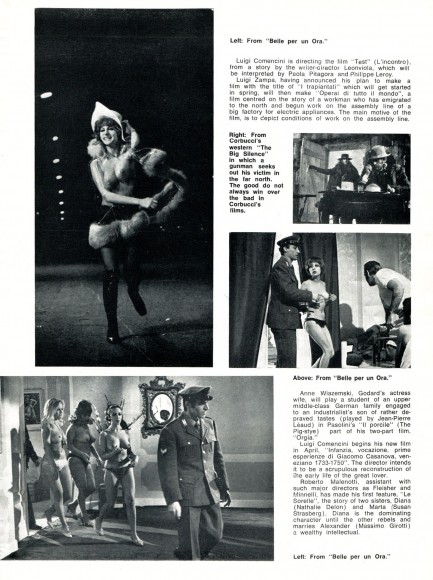 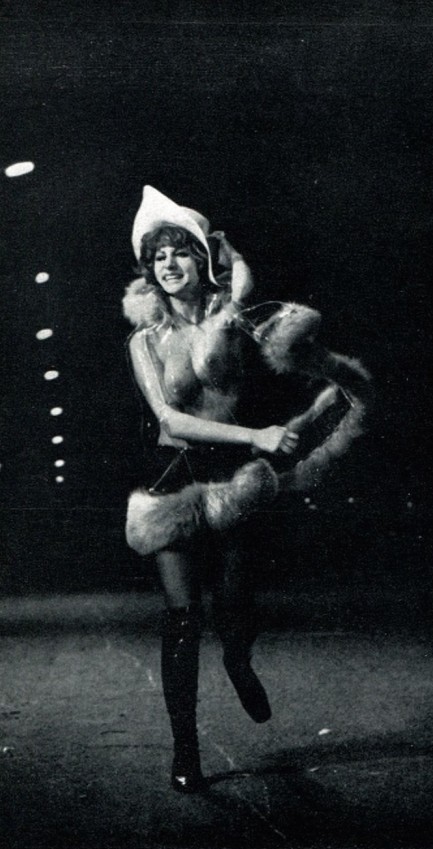 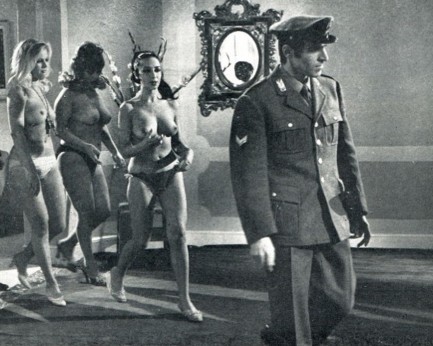 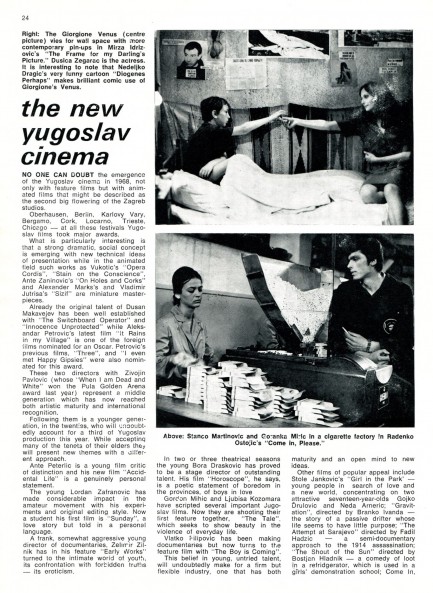 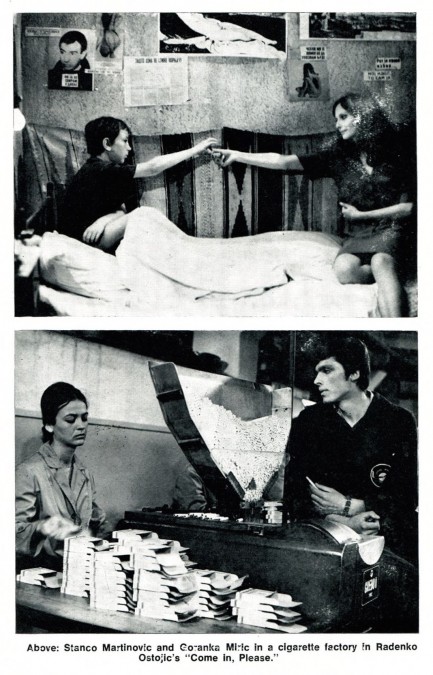 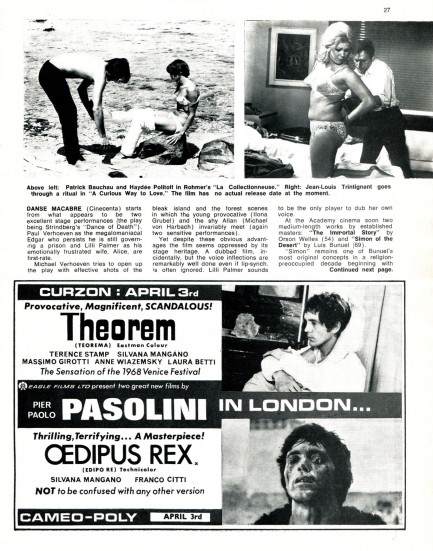 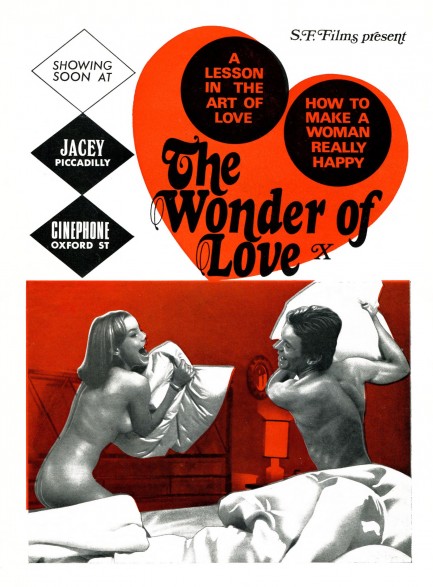
 You can't have him. He's the only reliable source of heat in this place. 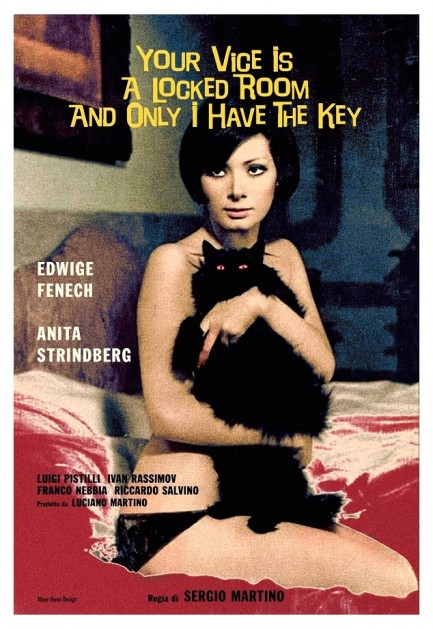
Above is a poster for Il tuo vizio è una stanza chiusa e solo io ne ho la chiave, aka Your Vice Is a Locked Room and Only I Have the Key. The movie premiered in Italy today in 1970, but we're showing you the U.S. poster because its imagery of co-star Edwige Fenech and a devil cat is better, in our opinion, than the Italian one, which you see at bottom. The title is ridiculous, obviously, but how is the film? It's a typically labyrinthine giallo. Anita Strindberg, she of the glorious mouth and astonishing hair, is being tormented by her impotent writer husband Oliviero. When murders begin to occur in the crumbling mansion where they live he begs Strindberg to supply his alibi, claiming he had nothing to do with the crimes. Enter the husband's niece, Fenech. She arrives for a visit and forms an immediate sexual bond with Strindberg. They both think Oliviero is a killer and set out to prove it. The film is interesting, but it's always a problem when a mystery's solution has to be explained at the end because nobody in the film—nor in the audience—could figure it out. Still though, giallo completists will find something here to like. Below are some production photos, as well as a promo shot made for the film of Fenech in a tub. And you thought she'd never let go of that cat. 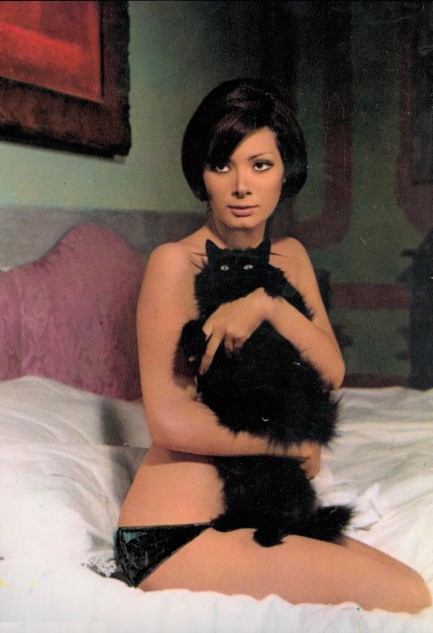 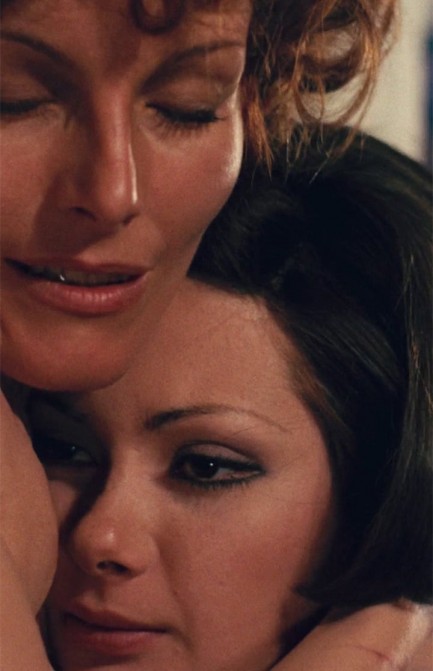 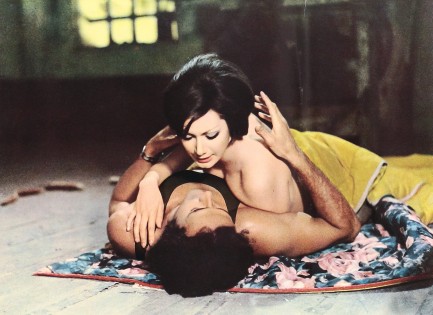 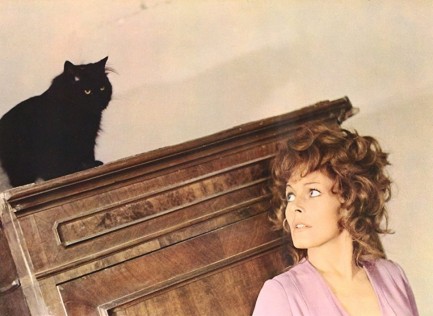 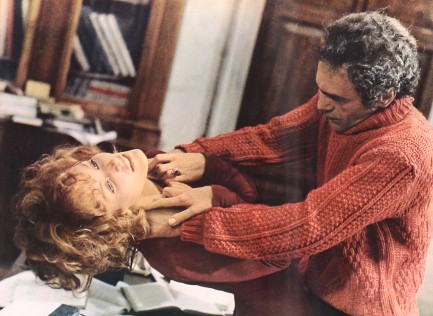 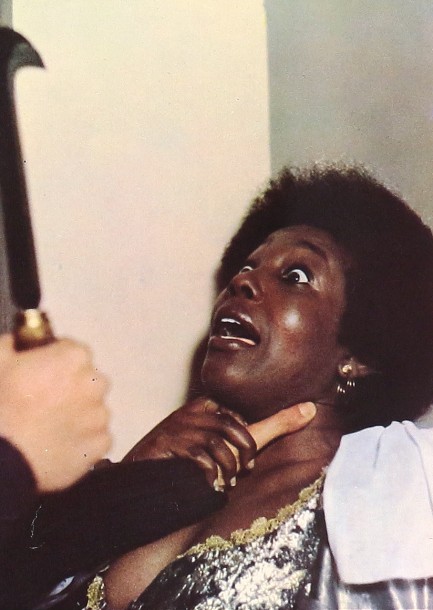 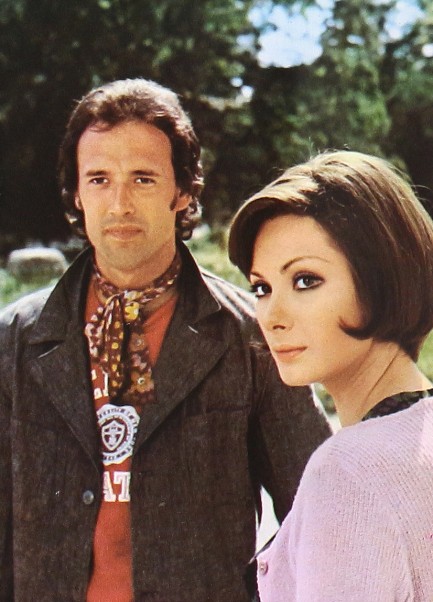 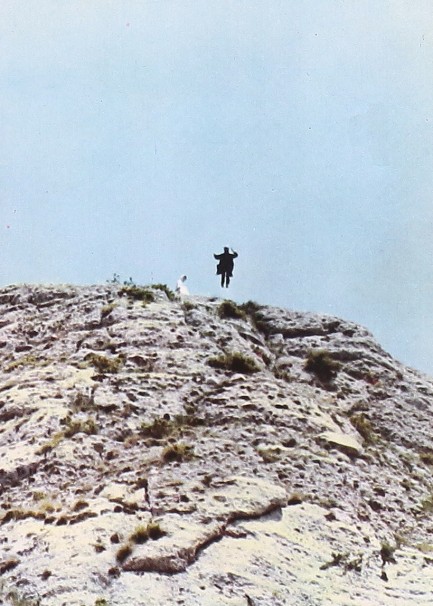 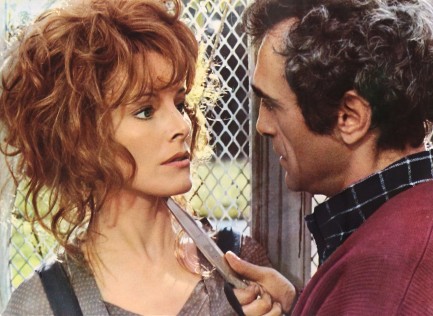 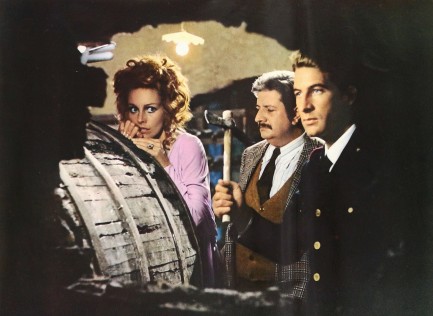 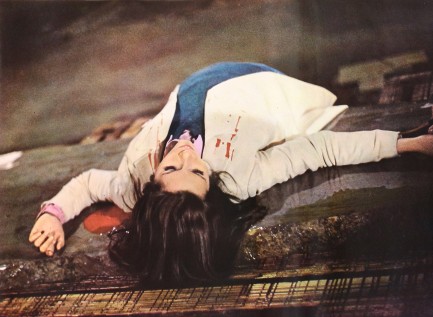 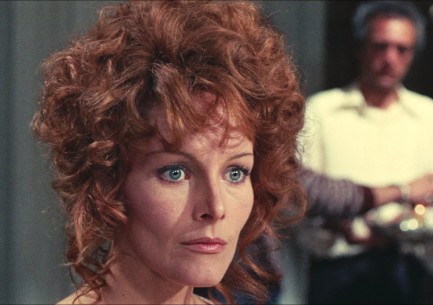 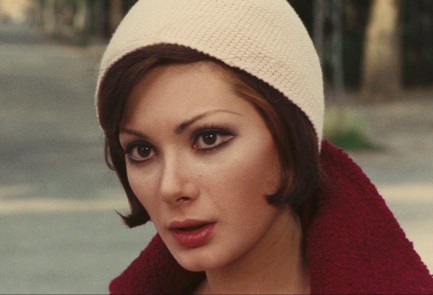 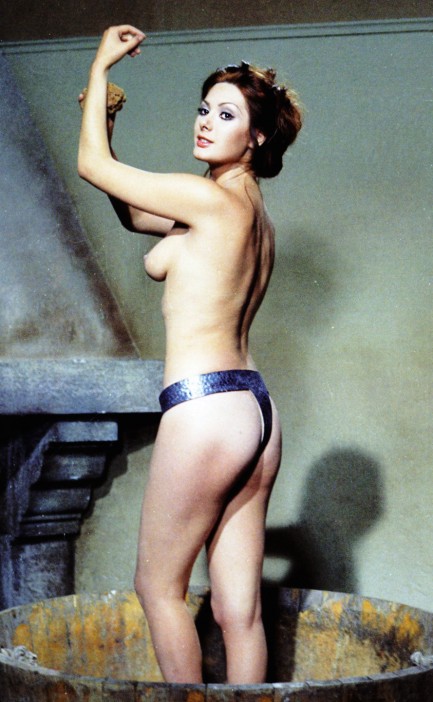 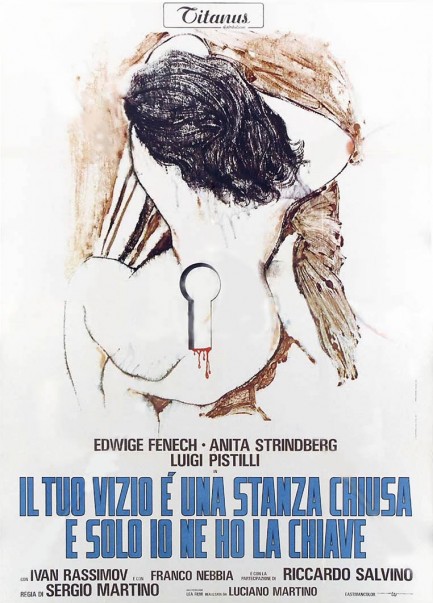
 A killer in black stalks Rome's fashionista set. 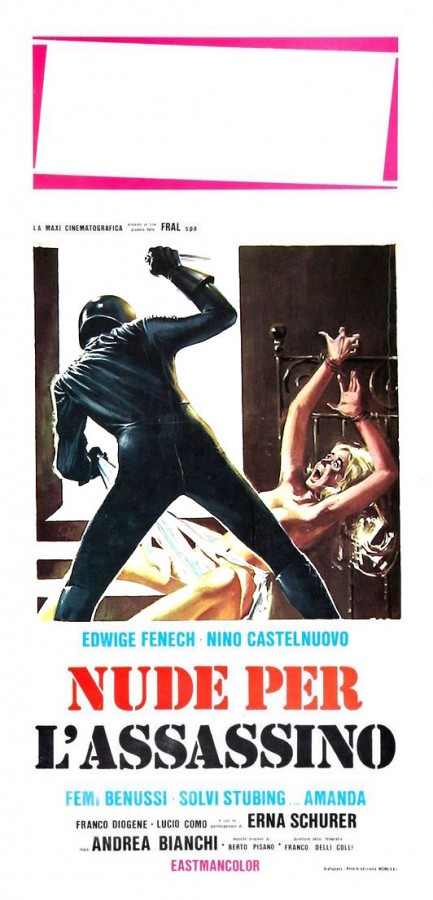
In Nude per l'assassino, aka Strip Nude for Your Killer there's a motorcycle helmeted serial killer on the loose and police have no idea who he is. The murderer first slaughtered a gynecologist whose most recent patient died of cardiac arrest during an abortion, but now the maniac is working his way through staff and talent at the Albatross Modeling Agency, killing women and men, catching many at their most vulnerable—i.e. naked. Suspects and clues are minimal. But hmm, let's see, how does a botched abortion tie into the other killings? Could it be.... revenge? Very likely. And what often happens in giallo when killers wear face-obscuring motorcycle helmets? Could it be... Well, we won't give it away, except to say the twist of who's under that helmet isn't a twist at all.
Near the end of the film there's a radio broadcast during which an announcer talks about the most recent murder. But first he reports on the government's “drastic new austerity measures.” We were fascinated to learn this was going on in Italy forty years ago. It didn't work then, and it doesn't work now. We can say the same about the movie. But while you won't find Nude per l'assassino on any list of top giallo films, it has some charms: Edwige Fenech, Femi Benussi, Solvi Stubing, and Erna Schurer. We've been pretty lazy about the giallo genre over the years, but watching this movie made us decide to remedy that. We're going to check out some of the better giallo flicks and report back. Nude per l'assassino premiered in Italy today in 1975.  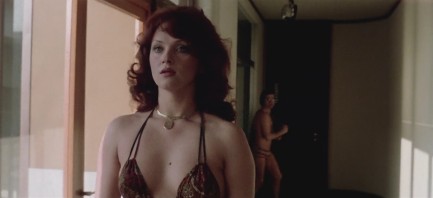 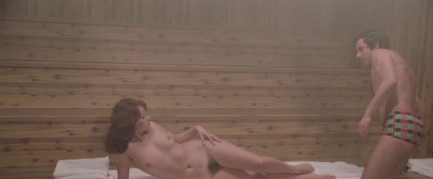 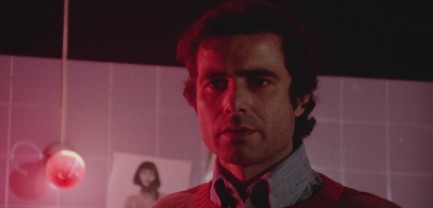 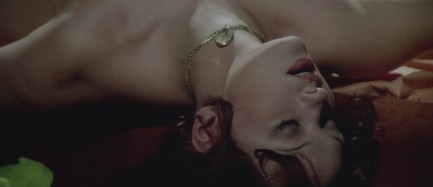 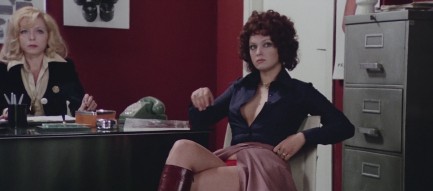 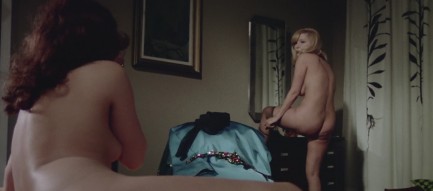 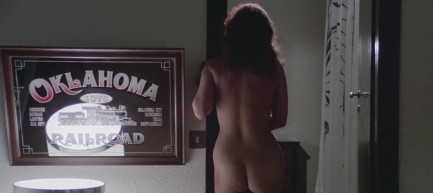 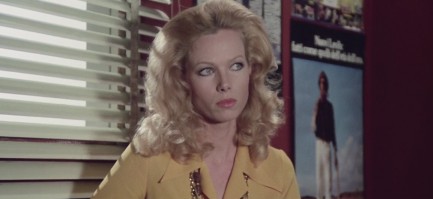  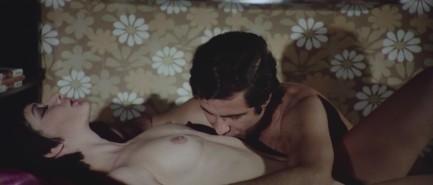 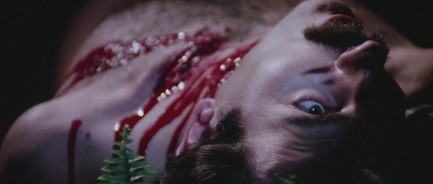
 He’s one guy you don’t want to sell short. 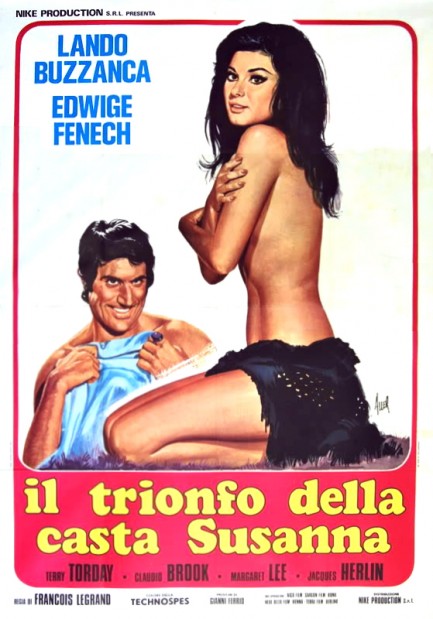 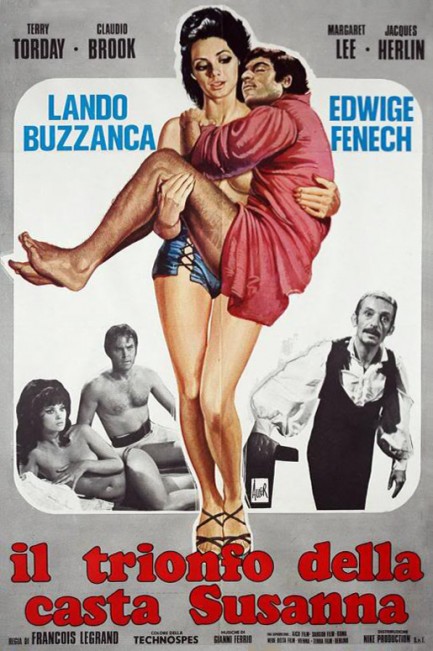
Il Trionfo della casta Susanna, for which you see two posters above, isn’t pulp influenced—it’s a period comedy set during the Napoleonic era—but it does feature giallo superstar Edwige Fenech, and any Fenech is good Fenech. Also, the promo posters were painted by Aller, who we’ve shown you a couple of times before, and like Fenech anything he does is worth sharing. Just for fun, we actually watched this film, and basically, the hostess of a hotel saves Napoleon from an assassination attempt, gets romantically entangled with him, and learns some military secrets. By the way, did you know Napoleon wasn’t short? He was about 5’7”, which was above average for those days. Anyway, there’s a lot of bed hopping, tasteful nudity, and broad humor, but really we can’t recommend the movie. Il Trionfo della casta Susanna, aka Frau Wirtin hat auch eine Nichte, aka House of Pleasure opened in Italy today in 1969. 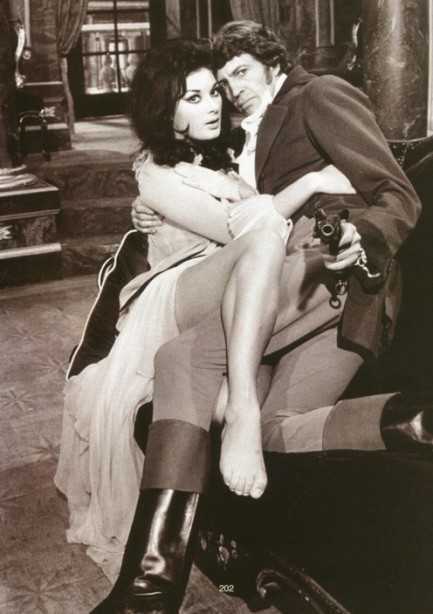 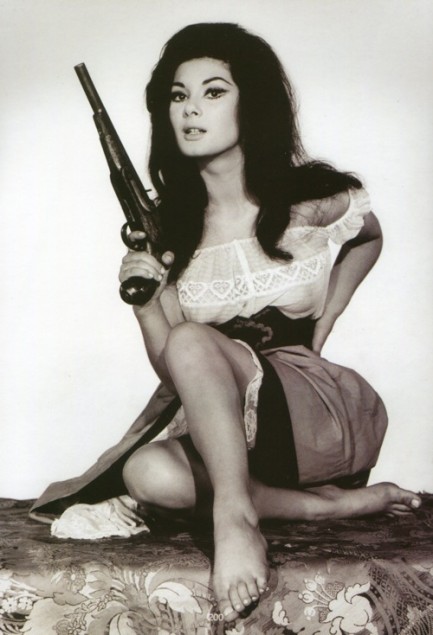 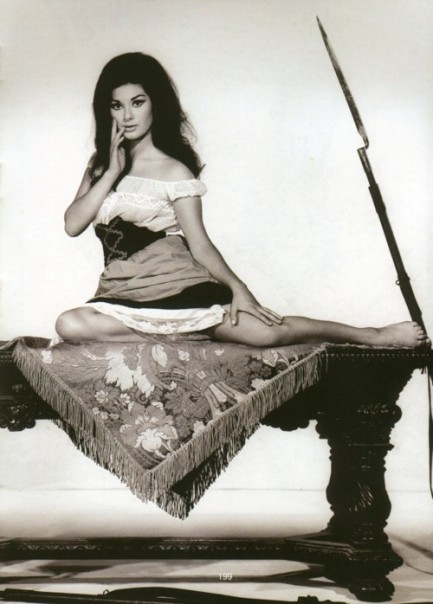 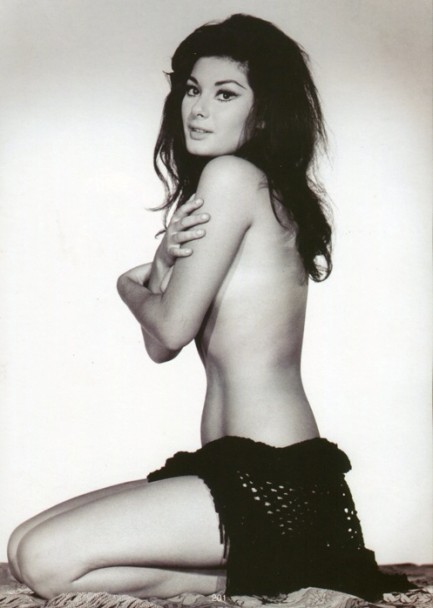
 Vice and virtue in Vienna. 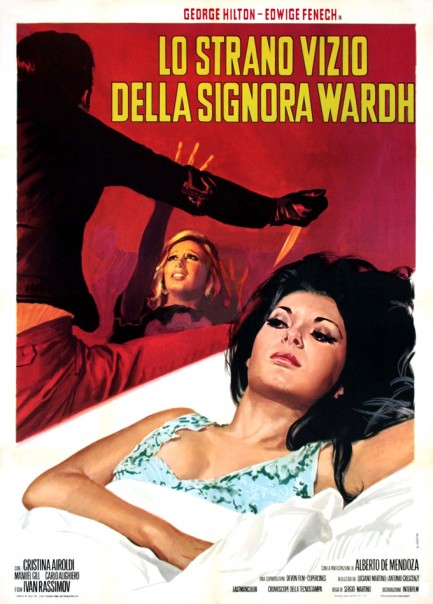
So, quite by coincidence there’s another movie we watched recently that also premiered today, though thirty years later than The Shanghai Gesture (see below). The movie is Lo strano vizio della Signora Wardh, which would translate as “The Strange Vice of Mrs. Wardh,” but was released in the U.S. as Blade of the Ripper. This flick is considered one of the best gialli ever made, and it’s tough to argue the point. It’s intricate, absorbing, unpredictable, colorful, and shot in an array of amazing external locations and inside one of the greatest mid-century modern apartments ever conceived. It also has Edwige Fenech, whose gifts are well known. Taking place mainly in Vienna and climaxing in Sitges, Spain (which happens to be one of our favorite towns in Europe)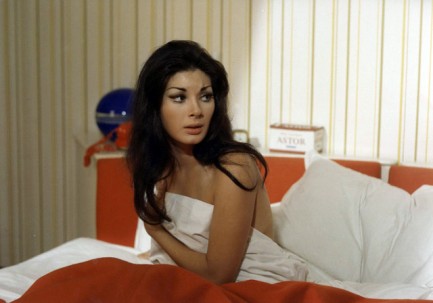 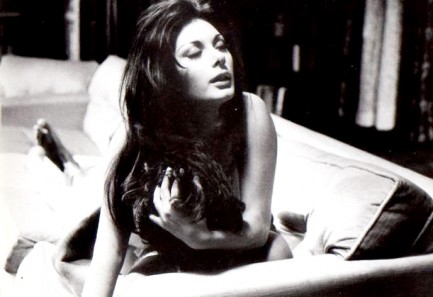 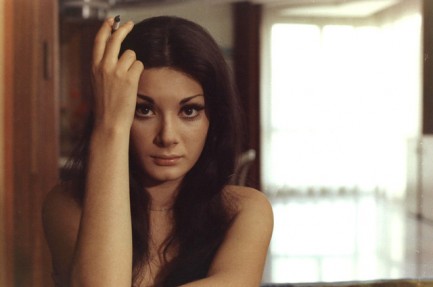 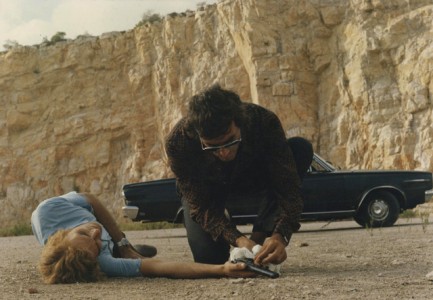 Signora Wardh is a tale of obssession and infidelity wrapped in a murder mystery. Mrs. Wardh does indeed have a strange vice, but that’s just window dressing. It’s her that’s being hunted throughout the movie—either by a serial killer, a demented ex-lover, or both. Or neither. They say that the only way to keep a secret is if no more than two people know it and one of them is dead. But the only way to commit murder is if the killer has an iron clad alibi, and for that he often needs help. Rule one conflicts with rule two, and that’s the fun of Signora Wardh. Above you see a rare and wonderful Italian promo poster painted by Giuliano Nistri, the younger brother of equally talented Enzo Nistri. We'll get back to both Nistri brothers a little later. Lo strano vizio della Signora Wardh opened in Italy today in 1971. Signora Wardh is a tale of obssession and infidelity wrapped in a murder mystery. Mrs. Wardh does indeed have a strange vice, but that’s just window dressing. It’s her that’s being hunted throughout the movie—either by a serial killer, a demented ex-lover, or both. Or neither. They say that the only way to keep a secret is if no more than two people know it and one of them is dead. But the only way to commit murder is if the killer has an iron clad alibi, and for that he often needs help. Rule one conflicts with rule two, and that’s the fun of Signora Wardh. Above you see a rare and wonderful Italian promo poster painted by Giuliano Nistri, the younger brother of equally talented Enzo Nistri. We'll get back to both Nistri brothers a little later. Lo strano vizio della Signora Wardh opened in Italy today in 1971.
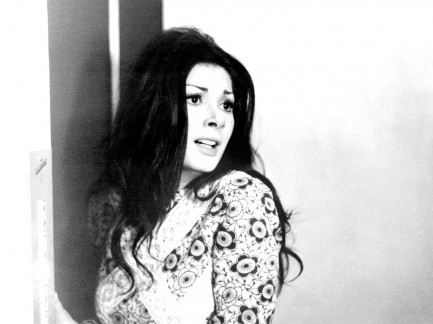 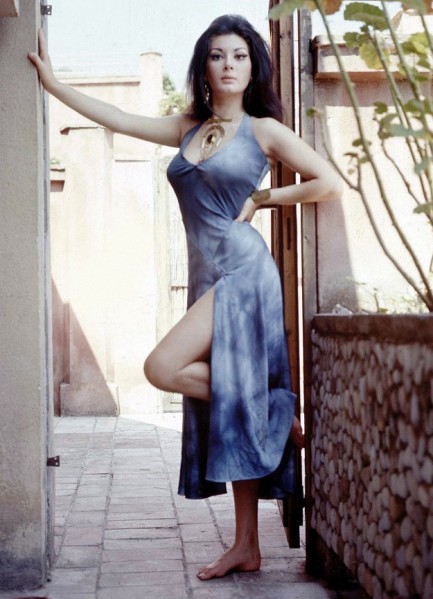
 They’ll try flattery, persuasion, bribery, and threats. After that, if you get murdered it’s your own damned fault. 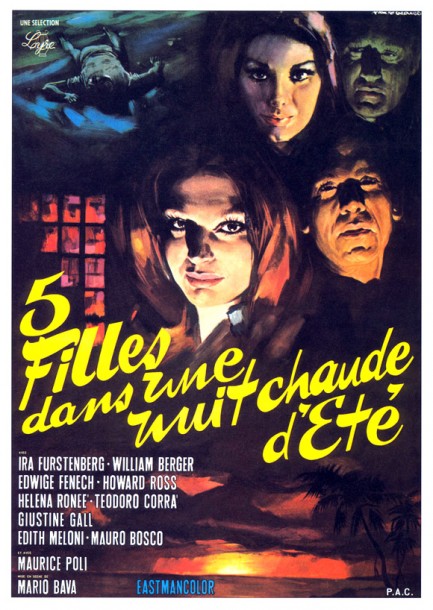
You know what we really like about a lot of older cinema? Color. Have you noticed the blue/gray palette that has taken over modern thriller and action movies? Mario Bava’s body count giallo 5 filles dans une nuit chaude d’été (originally released as 5 bambole per la luna d’agosto, aka Island of Terror, aka 5 Dolls for an August Moon) is merely realistic in the color department, but it looks like a riot of Technicolor compared to modern cinema. That was one of the aspects of it we enjoyed most. The movie was set in and around an amazing mid-century modern beachfront pad right out of an early James Bond movie. So that was cool too. And we also enjoyed Edwige Fenech and Ely Galleani. So that covers the good—great color cinematography, great sets, Fenech and Galleani.
Now for the bad. Let’s just boil that all down to a limp script. Basically, a wealthy industrialist invites some guests to his private island and introduces them to a chemist who has a formula that could be worth millions. The chemist won’t reveal any details of this process, and pretty soon someone is murdered (the houseboy, who Fenech is sleeping with “to do something for the working classes”). Naturally, she’s a suspect, but then there’s another murder. And another. And soon, Fenech is murdered too, rather cruelly. Cut off from police, the guests store all these bodies in a meat locker and try to solve the crimes themselves. But they just keep getting bumped off. Are the killings due to infidelity? Greed? All around perversity? soon someone is murdered (the houseboy, who Fenech is sleeping with “to do something for the working classes”). Naturally, she’s a suspect, but then there’s another murder. And another. And soon, Fenech is murdered too, rather cruelly. Cut off from police, the guests store all these bodies in a meat locker and try to solve the crimes themselves. But they just keep getting bumped off. Are the killings due to infidelity? Greed? All around perversity?
Consensus is that 5 bambole per la luna d’agosto is not one of Bava’s best films. But all those shots of bodies hanging in the meatlocker confirm that he at least tried to have fun with it. The climax brings more twists, more deaths, and one main takeaway—no matter how filthy rich a man gets he’ll stab you in the back (or front) for a few more dollars. But we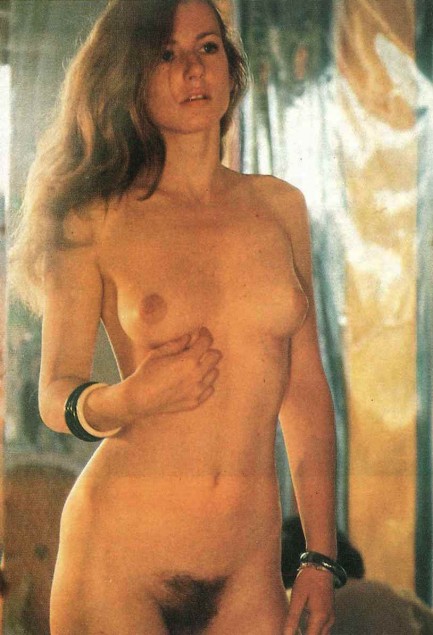 already knew that, didn’t we? Also, women are shady as fuck too—at least, they are in giallo. We’re not going to recommend this film to Bava newcomers, simply because he made others that were so much better. But if you know his work and haven’t seen this one, by all means add it to your queue. Made in Italy and released in 1970, 5 filles dans une nuit chaude d’été/5 bambole per la luna d’agosto premiered in France today in 1972. already knew that, didn’t we? Also, women are shady as fuck too—at least, they are in giallo. We’re not going to recommend this film to Bava newcomers, simply because he made others that were so much better. But if you know his work and haven’t seen this one, by all means add it to your queue. Made in Italy and released in 1970, 5 filles dans une nuit chaude d’été/5 bambole per la luna d’agosto premiered in France today in 1972.
 If a woman strips in the forest and no one sees her, did it really happen? 
Edwige Fenech was born Edwige Sfenek in French-controlled Algeria to Maltese and Italian parents, and went on to become one of the most inspiring sex symbols of the late ’60s and early ’70s, acting in giallos, comedies, and horror films, hosting a chat show in the 1980s, and recently appearing in Hostel: Part II. The striking image above is from the West German magazine Sexy, and it dates from 1971 or 1972. The caption tells us Fenech is the “Traum-Girl der Woche,” or Dream-Girl of the Week.

|
 |

The headlines that mattered yesteryear.
2003—Hope Dies
Film legend Bob Hope dies of pneumonia two months after celebrating his 100th birthday. 1945—Churchill Given the Sack
In spite of admiring Winston Churchill as a great wartime leader, Britons elect
Clement Attlee the nation's new prime minister in a sweeping victory for the Labour Party over the Conservatives. 1952—Evita Peron Dies
Eva Duarte de Peron, aka Evita, wife of the president of the Argentine Republic, dies from cancer at age 33. Evita had brought the working classes into a position of political power never witnessed before, but was hated by the nation's powerful military class. She is lain to rest in Milan, Italy in a secret grave under a nun's name, but is eventually returned to Argentina for reburial beside her husband in 1974. 1943—Mussolini Calls It Quits
Italian dictator Benito Mussolini steps down as head of the armed forces and the government. It soon becomes clear that Il Duce did not relinquish power voluntarily, but was forced to resign after former Fascist colleagues turned against him. He is later installed by Germany as leader of the Italian Social Republic in the north of the country, but is killed by partisans in 1945.
|

|
|

It's easy. We have an uploader that makes it a snap. Use it to submit your art, text, header, and subhead. Your post can be funny, serious, or anything in between, as long as it's vintage pulp. You'll get a byline and experience the fleeting pride of free authorship. We'll edit your post for typos, but the rest is up to you. Click here to give us your best shot.

|
|











































































































































 Signora Wardh is a tale of obssession and infidelity wrapped in a murder mystery. Mrs. Wardh does indeed have a strange vice, but that’s just window dressing. It’s her that’s being hunted throughout the movie—either by a serial killer, a demented ex-lover, or both. Or neither. They say that the only way to keep a secret is if no more than two people know it and one of them is dead. But the only way to commit murder is if the killer has an iron clad alibi, and for that he often needs help. Rule one conflicts with rule two, and that’s the fun of Signora Wardh. Above you see a rare and wonderful Italian promo poster painted by Giuliano Nistri, the younger brother of equally talented Enzo Nistri. We'll get back to both Nistri brothers a little later. Lo strano vizio della Signora Wardh opened in Italy today in 1971.
Signora Wardh is a tale of obssession and infidelity wrapped in a murder mystery. Mrs. Wardh does indeed have a strange vice, but that’s just window dressing. It’s her that’s being hunted throughout the movie—either by a serial killer, a demented ex-lover, or both. Or neither. They say that the only way to keep a secret is if no more than two people know it and one of them is dead. But the only way to commit murder is if the killer has an iron clad alibi, and for that he often needs help. Rule one conflicts with rule two, and that’s the fun of Signora Wardh. Above you see a rare and wonderful Italian promo poster painted by Giuliano Nistri, the younger brother of equally talented Enzo Nistri. We'll get back to both Nistri brothers a little later. Lo strano vizio della Signora Wardh opened in Italy today in 1971. 



 soon someone is murdered (the houseboy, who Fenech is sleeping with “to do something for the working classes”). Naturally, she’s a suspect, but then there’s another murder. And another. And soon, Fenech is murdered too, rather cruelly. Cut off from police, the guests store all these bodies in a meat locker and try to solve the crimes themselves. But they just keep getting bumped off. Are the killings due to infidelity? Greed? All around perversity?
soon someone is murdered (the houseboy, who Fenech is sleeping with “to do something for the working classes”). Naturally, she’s a suspect, but then there’s another murder. And another. And soon, Fenech is murdered too, rather cruelly. Cut off from police, the guests store all these bodies in a meat locker and try to solve the crimes themselves. But they just keep getting bumped off. Are the killings due to infidelity? Greed? All around perversity? already knew that, didn’t we? Also, women are shady as fuck too—at least, they are in giallo. We’re not going to recommend this film to Bava newcomers, simply because he made others that were so much better. But if you know his work and haven’t seen this one, by all means add it to your queue. Made in Italy and released in 1970, 5 filles dans une nuit chaude d’été/5 bambole per la luna d’agosto premiered in France today in 1972.
already knew that, didn’t we? Also, women are shady as fuck too—at least, they are in giallo. We’re not going to recommend this film to Bava newcomers, simply because he made others that were so much better. But if you know his work and haven’t seen this one, by all means add it to your queue. Made in Italy and released in 1970, 5 filles dans une nuit chaude d’été/5 bambole per la luna d’agosto premiered in France today in 1972. 






































































